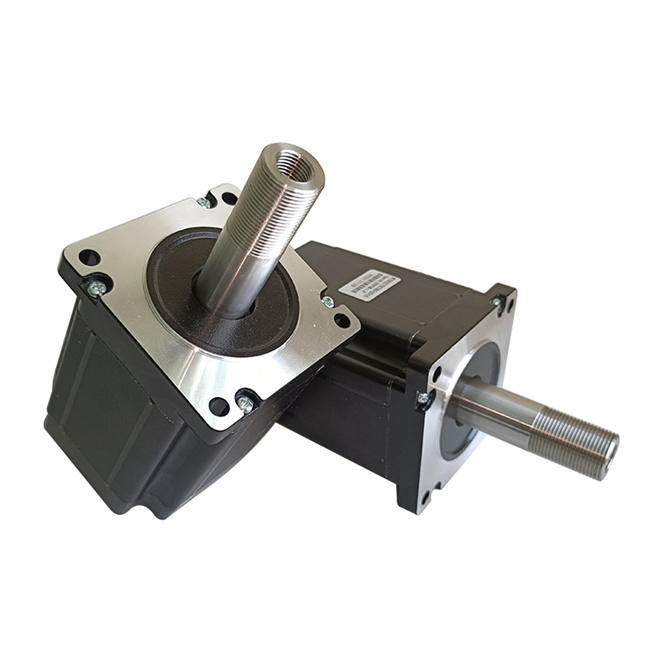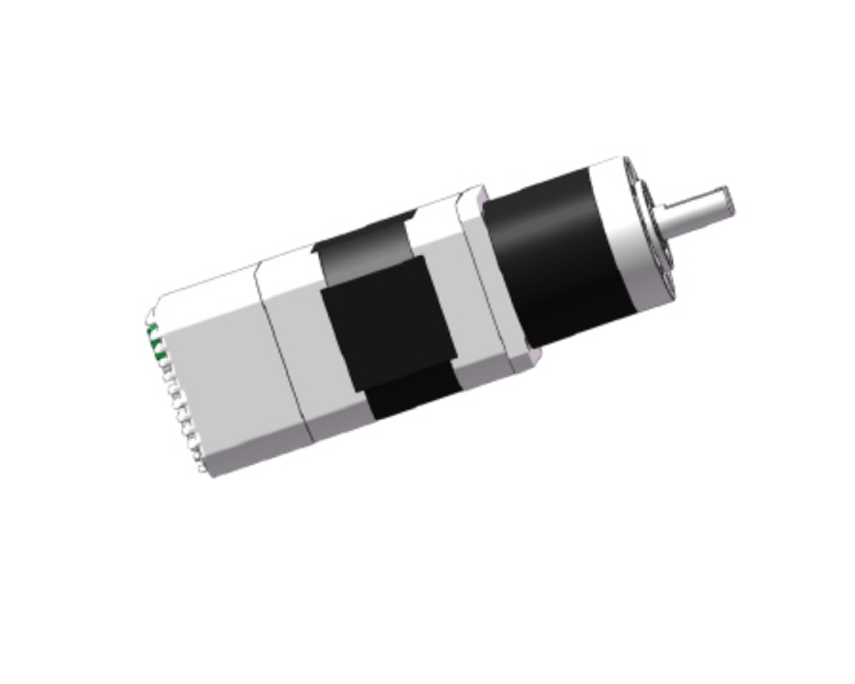Introduction of stepper motor
Stepper motor can only be controlled by digital signal operation, when the pulse is provided to the driver, in too short a time, the stepper motor control system sends out too many pulses, that is, the pulse frequency is too high, will lead to the stepper motor jam. To solve this problem, acceleration and deceleration must be adopted. That is to say, when the stepper motor starts, the pulse frequency should be gradually increased, and the pulse frequency should be gradually reduced when decelerating. This is often referred to as "acceleration and deceleration" method.
The structure of the stepper motor
The speed of stepper motor is changed according to the input pulse signal. In theory, give the driver a pulse and the stepper motor will rotate one step Angle (subdivision is a subdivision step Angle). In fact, if the pulse signal changes too fast, the magnetic response between the rotor and the stator will not follow the change of the electric signal due to the damping effect of the reverse electromotive force inside the stepper motor, which will lead to the blocked rotation and lost step.
How stepper motors work
Therefore, when the stepper motor starts at high speed, it needs to adopt the method of pulse frequency speed increase, and there should be a deceleration process when it stops, so as to ensure the precise positioning control of the stepper motor. Acceleration and deceleration work the same way.
Video of stepper motor
Examples of acceleration are illustrated below
The acceleration process is composed of the base frequency (lower than the maximum direct starting frequency of the stepper motor) and the jump frequency (gradually accelerating frequency) of the acceleration curve (the reverse in the deceleration process). Jumping frequency refers to the frequency that the stepper motor gradually increases on the basic frequency. This frequency should not be too large, otherwise it will cause gridlock and step loss.
Acceleration and deceleration stepping motor working principle
Acceleration and deceleration curve is generally exponential curve or adjusted exponential curve, of course, can also be used straight line or sine curve. Using single chip microcomputer or PLC, can achieve acceleration and deceleration control. For different loads and different speeds, it is necessary to select the appropriate base frequency and jump frequency to achieve the best control effect.
Exponential curve, in software programming, the time constant is calculated and stored in the computer memory, pointing to selection at work.
Usually, the acceleration and deceleration time of the stepper motor is more than 300ms. If the acceleration and deceleration time is too short, it will be difficult to realize the high-speed rotation of the stepper motor for most of the stepper motors.
Stepper motors are widely used in various industries and applications due to their precise control of rotational movement. Stepper motors can be classified into two main categories: acceleration and deceleration stepping motors.
Acceleration Stepping Motor
An acceleration stepping motor is a type of stepper motor that is designed to accelerate the rotational speed of the motor shaft from zero to a desired speed in a smooth and controlled manner. The working principle of an acceleration stepping motor is based on the principle of magnetic fields.
The motor has a rotor and a stator. The rotor is a permanent magnet that rotates around a central axis. The stator is made up of a series of electromagnets that are arranged in a circular pattern around the rotor. When an electric current is applied to a particular electromagnet, it generates a magnetic field that attracts the rotor towards it.
In an acceleration stepping motor, the electromagnets are energized in a sequence, which causes the rotor to rotate in a stepwise manner. The step angle of the motor is determined by the number of electromagnets in the stator. The greater the number of electromagnets, the smaller the step angle.
To accelerate the motor, the current supplied to the electromagnets is gradually increased, which increases the strength of the magnetic field and the torque generated by the motor. As the motor accelerates, the speed of rotation increases until it reaches the desired speed.
Deceleration Stepping Motor
A deceleration stepping motor is a type of stepper motor that is designed to decelerate the rotational speed of the motor shaft in a smooth and controlled manner. The working principle of a deceleration stepping motor is similar to that of an acceleration stepping motor, but in reverse.
The motor has a rotor and a stator, and the rotor rotates around a central axis. The stator is made up of a series of electromagnets, and when an electric current is applied to a particular electromagnet, it generates a magnetic field that attracts the rotor towards it.
In a deceleration stepping motor, the electromagnets are energized in a sequence, which causes the rotor to rotate in a stepwise manner. The step angle of the motor is determined by the number of electromagnets in the stator. The greater the number of electromagnets, the smaller the step angle.
To decelerate the motor, the current supplied to the electromagnets is gradually decreased, which reduces the strength of the magnetic field and the torque generated by the motor. As the motor decelerates, the speed of rotation decreases until it comes to a stop.
English
Русский
العربية
Français
Español
Português
Deutsch
italiano
日本語
한국어
Nederlands
Tiếng Việt
ไทย
Polski
Türkçe
አማርኛ
Bahasa Melayu
தமிழ்
Filipino
Bahasa Indonesia
magyar
Română
Čeština
हिन्दी
فارسی
Kiswahili
Slovenčina
Slovenščina
Norsk
Svenska
українська
Ελληνικά
Suomi
עברית
Dansk
বাংলা
Hrvatski
Afrikaans
Gaeilge
Eesti keel
Māori
සිංහල
Azərbaycan dili
Euskara
Беларуская мова
Български
guarani
Kreyòl ayisyen
Kurdî
Lietuvių
Македонски
తెలుగు














